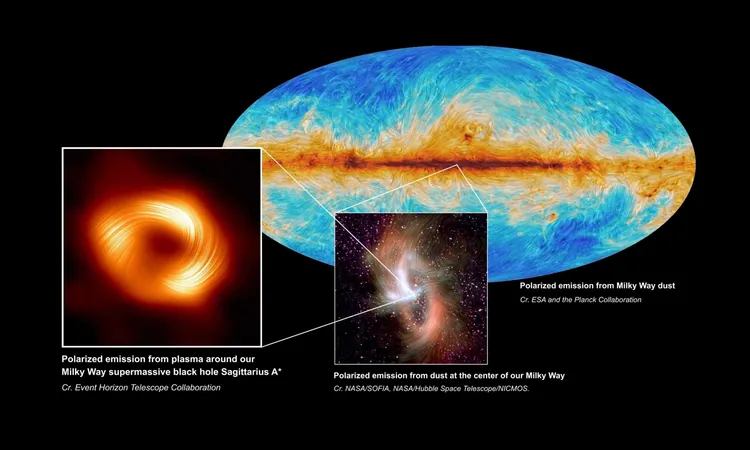
Is Our Milky Way’s Supermassive Black Hole A Cosmic Speedster Aimed Right at Us?
2025-08-26
Author: Wei
An exciting new study reveals that Sagittarius A*, the supermassive black hole at the heart of our Milky Way galaxy, is not only spinning at maximum velocity but is also positioned almost directly in line with Earth!
How did researchers uncover this stellar revelation? They harnessed the power of machine learning to analyze data from the groundbreaking Event Horizon Telescope, which previously unveiled the first-ever image of a black hole back in 2017.
The Machine Learning Marvel Behind the Discovery
Led by Michael Janssen from Radboud University and supported by a team from the University of Southern California, the researchers employed a Bayesian neural network. This sophisticated model can produce reliable estimates while also accounting for uncertainties.
Instead of using traditional averaged images, the team fed the algorithm raw data, representing the intricate polarization visibility signals that characterize very long baseline interferometry (VLBI). This preserved vital information, allowing the model to detect stable patterns amidst potential noise.
Why Spin and Orientation Matter
The spin of a black hole is crucial; measured on a scale from 0 to 1, a high spin indicates that the black hole is churning energy into its surroundings. When its spin aligns with our line of sight, we receive a distinctive signal that can vary significantly from edge-on orientation, particularly in polarized light.
In this case, the analysis suggests Sagittarius A* has a spin estimated between 0.8 and 0.9, with its axis tilted close to our viewpoint—specifically at angles around 162 degrees and 29 degrees in different models. This configuration means the black hole is almost directly pointed at Earth!
What Lies Near the Black Hole?
The findings also imply that the intense light emissions near Sagittarius A* predominantly stem from superheated electrons swirling in the surrounding accretion disk rather than from a jet.
Notably, the preferred electron temperature ratio for Sagittarius A* is around 14, aligning with the observed polarized signals. This intricate analysis required massive computational efforts, involving millions of synthetic datasets.
Comparative Insights: M87* vs. Sagittarius A*
Interestingly, the same method was applied to M87*, the first black hole ever imaged, revealing that it spins in a retrograde manner, rotating contrary to the inflow of gas. This suggests a dramatic past merger may have flipped its alignment.
What’s Next for Black Hole Research?
While the current model is promising, researchers stress the need for improved data. Future endeavors, including new observational stations and advanced telescopes like the upcoming Africa Millimetre Telescope in Namibia, aim to enhance our understanding of Sagittarius A*.
As the array of telescopes expands, enhanced frequency observations will enable scientists to determine whether our galaxy's black hole is indeed spinning quickly and facing us, mapping its magnetic fields and energy flows. These efforts could turn intriguing theories into concrete cosmic truths!
This groundbreaking study has been published in Astronomy & Astrophysics. Stay tuned for more thrilling updates from the cosmos!




 Brasil (PT)
Brasil (PT)
 Canada (EN)
Canada (EN)
 Chile (ES)
Chile (ES)
 Česko (CS)
Česko (CS)
 대한민국 (KO)
대한민국 (KO)
 España (ES)
España (ES)
 France (FR)
France (FR)
 Hong Kong (EN)
Hong Kong (EN)
 Italia (IT)
Italia (IT)
 日本 (JA)
日本 (JA)
 Magyarország (HU)
Magyarország (HU)
 Norge (NO)
Norge (NO)
 Polska (PL)
Polska (PL)
 Schweiz (DE)
Schweiz (DE)
 Singapore (EN)
Singapore (EN)
 Sverige (SV)
Sverige (SV)
 Suomi (FI)
Suomi (FI)
 Türkiye (TR)
Türkiye (TR)
 الإمارات العربية المتحدة (AR)
الإمارات العربية المتحدة (AR)